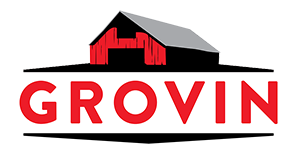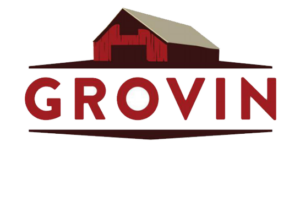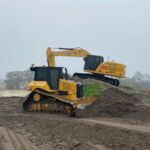When Is the Best Time of Year to Lay Sod?
If you’re considering laying sod, it is important to know that certain weather conditions are more conducive to better results than others. The time of year you lay your sod, and what type of sod you choose will also play a factor in the results. If you want to know the best time to lay sod in your yard, keep reading.
Best Time to Lay Sod
The best time of year to lay sod will depend on your climate and what type of grass you want. There are two types of sod you can lay, cool-season grass, and warm-season grass. What time you choose will depend on where you live. Cooler climates up north may benefit from cool-season grass, but in Florida, the best type of sod for your yard is warm-weather grass. Warm-season grass options do best if you lay the sod in mid to late spring. If you want to lay sod, planning ahead is a key step you should take so you’re not caught off guard when spring hits.
How to Choose the Best Type of Sod for Your Yard
Grovin Farms is proud to offer several types of warm-season grasses for you to choose from. Which type of sod is right for your yard will depend on several factors, such as how often you are willing to mow it and how much water it needs.
Bermuda Grass
Bermuda grass is a popular grass that is extremely weed resistant thanks to its aggressive growth habits. Bermuda is low-maintenance and tends to do well in Florida due to its full sun requirements. It is also drought-tolerant, making it a great choice if you don’t water your yard often.
St. Augustine Grass
St. Augustine grasses thrive in the heat and do well in the shade, perfect for lush Florida backyards. St. Augustine is also frost tolerant, making it stronger in the winter and cold snaps than other varieties. It does require more maintenance than other varieties, needing regular watering and fertilizing.
Centipede Grass
Centipede grass is tough, low growing, and low maintenance. It does great in the acidic soil of the lower South and needs partial to full sun. Centipede does have a rougher texture than most turf grasses but has excellent weed and pest resistance.
Zoysia Grass
Zoysia is hardy, with a thick, deep root structure. It requires less mowing and watering than other types of warm-season grasses. It is low-maintenance and bug-resistant, needing partial to full sun.
Argentine Bahiagrass
Argentine Bahiagrass forms an extensive, deep root system. Bahia grows in many types of soil, including clay, muck soil, and sandy soil. It is low-maintenance, requiring very little water or fertilizer. During extended droughts, it will go dormant, turning brown until conditions become favorable, when it will grow back to a beautiful green. It is insect and disease resistant and tolerates cold snaps and winter conditions well.
Best Conditions to Lay Sod
The best conditions to lay sod in are during cool to warm temperatures, such as mid-spring. If it is too cold, the sod can freeze, but too hot and it can dry up too quickly. Ideal conditions are when the daytime temperature is under 70 degrees Fahrenheit, but not below 55. It is also important to make sure it has not rained recently, as muddy soil is not ideal for laying sod. Mud can lead to footprints that create divots on the surface, creating an uneven yard. The best conditions for laying sod are a cool, sunny day, but other conditions may be possible.
Why Choose Grovin Sod Farm?
Grovin Farms is a full-service site contractor specializing site development, excavation underground utilities, and sod serving all of Florida. We are an 800-acre family-owned and operated sod farm, using only the latest in machinery and technology to ensure the highest quality results for our customers. If you are considering laying sod in your yard, contact us today and see what our experts can do for you.



